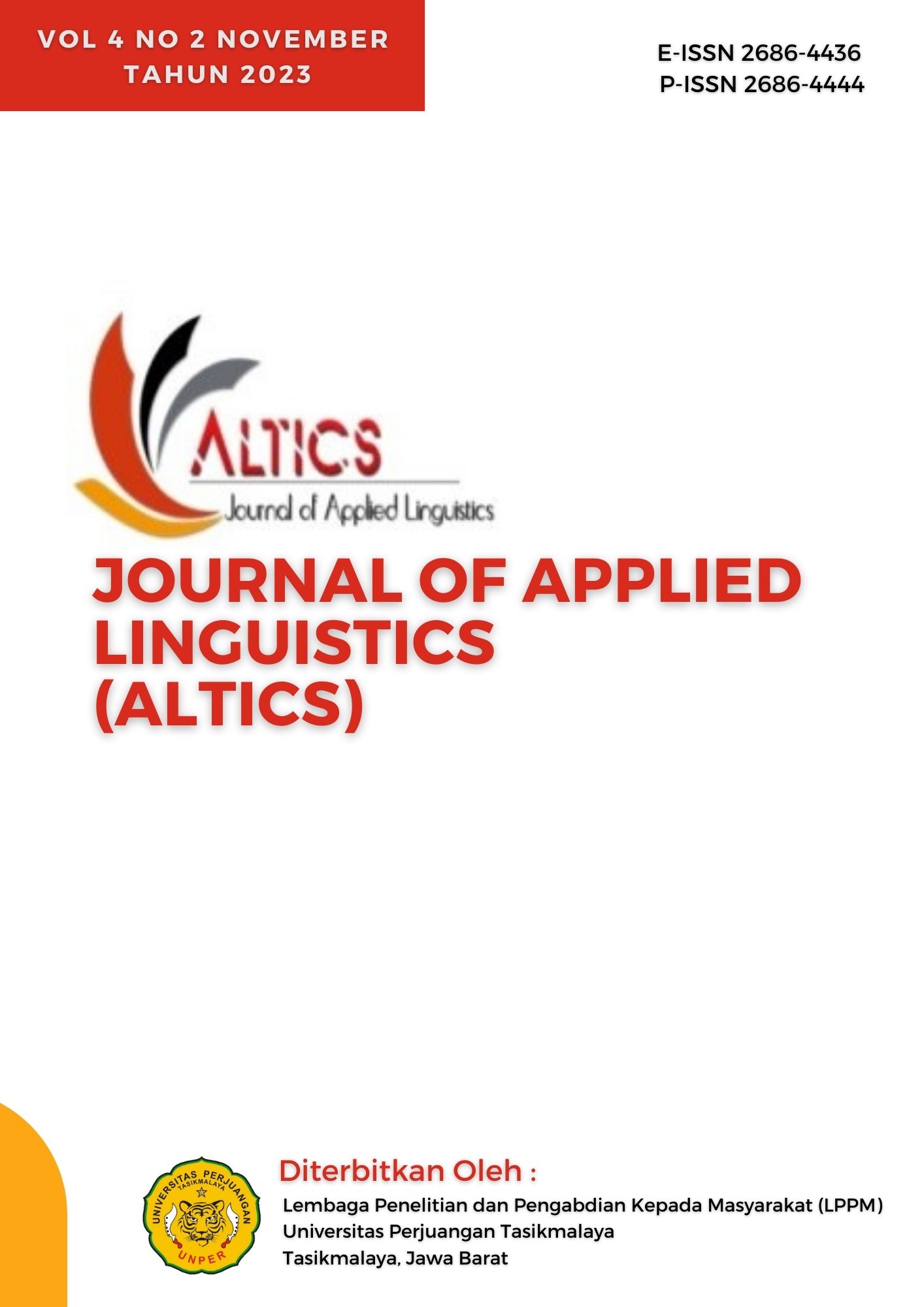Students’ Perception towards the Use of Animation Movie in Mastering Vocabulary
DOI:
https://doi.org/10.36423/altics.v4i2.1602Abstract
This paper investigated the potential benefit from the use of animation movie in English classroom to improve students’ vocabulary mastery in the first grade of a junior high school. The approach of the research was qualitative research, embracing characteristics of a case study. The data were obtained from three instruments, including observation to observe the field of the research conditions and how the teacher used the animation movie to improve students’ vocabulary mastery in the classroom; questionnaire aimed to know what students’ perception towards the use animation movie to improve vocabulary mastery; and the interview gave to the students in order to know their perception towards learning English by using the animation movie and also to support the findings from the questionnaire. The findings from the research revealed that the teacher used the animation movie as a media to support the materials from the coursebook. Then, Drilling was employed by the teacher to make learners get familiar to the word form especially to how it sounds. To make learners more familiar with the word, drilling should be clear and natural (Thornbury, 2002, p. 144). Moreover, students’ perception towards the use of animation movie to improve vocabulary mastery was in very good category. It proved by most of them said that the animation movie helped their understanding in learning English; made the learning process joyful; help them to enrich their vocabulary; and motivate them in joining the classroom. Finally, the author provides suggestions of how English teacher can elaborate the use of the animation movie in every learning process and integrate it with the materials of the lesson in order to make an improvement students’ vocabulary mastery skill and another English basic skill.
Downloads
Published
How to Cite
Issue
Section
License
Copyright (c) 2022 Journal of Applied Linguistics (ALTICS)

This work is licensed under a Creative Commons Attribution 4.0 International License.
CC Attribution 4.0











